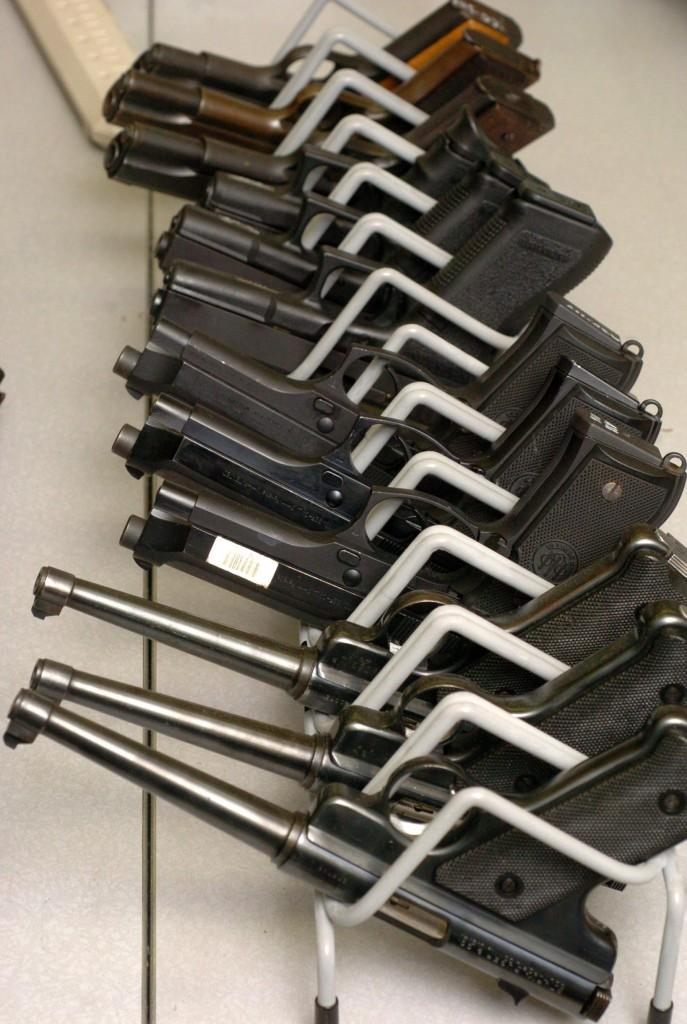Lessons from Tucson: Gun Control in Gotham City
July 23, 2011
Published: February 2, 2011
Maybe I haven’t been around long enough to develop a proper sense of historical perspective for what happened earlier this month, or maybe I haven’t lived through many days like it, but I will always remember Jan. 8. I had finished my morning run and was just getting ready to jump in the shower when my dad asked if I had heard the news. A congresswoman was shot (“someone named Giffords or Jiffords or something”) somewhere in Arizona. I remember laughing at him, convinced he had heard the story wrong.

But just to check, I pulled out my phone. “REP. GABRIELLE GIFFORDS SHOT, 6 DEAD” glared back at me, and I remember my lighthearted smile fading, replaced by a blank stare of confused anguish. I devoured the article, but the details were few; people weren’t sure exactly what had happened. That whole day, one question dominated my thoughts: “will she survive?”
Thankfully, she did. Two weeks later, as the dust is starting to settle and things in Washington are returning to normal, it’s worth reflecting on what that means for us as students and as a society. For the purpose of this article, I’m going to skip over Palin’s crosshairs metaphor and whether or not our political rhetoric is too incendiary, because cable news channels have said essentially everything there is to say about that.
But as students in the most densely populated metropolis in the country, we should step back and consider the painful lessons from Tucson. I cannot help but wonder how much worse that day would have been, how many more lives may have been lost if Rep. Nadler or Rep. Maloney were the target. How many more parents, brothers and sisters would have been heartbroken if the shooter emptied a clip in a crowded New York subway car? With our population density, I shudder when I think about the potential body count from a gunman loose in Manhattan. So does that mean we, as city-dwellers, subject to an acutely real threat, should ban guns altogether?
For the issue of gun control, that question is far too often framed as a choice between two absolutes: “Guns are dangerous and should be banned, period,” or “the second amendment says we can have guns, and that’s that.” Personally, I believe the founding fathers wrote that amendment in a different time and place, in a society without police, where an armed citizenry really was necessary for the security of a free state.
Also, a number of studies like those published by the Harvard School of Public Health and the New England Journal of Medicine suggest that keeping a gun in the home raises the risk of homicide and suicide by astonishing percentages. But I recognize that it’s not my place to choose for everyone, and that some people need a gun for peace of mind, buying one in the hope that they will never need to use it. I respect those people, and I understand their point: if criminals will have guns no matter what the law says, why shouldn’t law-abiding citizens carry them too? Again, I disagree with the fundamental premise of that argument—that more guns make our society safer—but it’s a valid sentiment nonetheless.
So where is the middle? How do we minimize the risk of future Tucson rampages while preserving that quintessentially American right to personal safety and piece of mind? If I had a comprehensive answer to that question, I could probably work for the President. But I think the place to start is to look for reasonable, common sense solutions that could prevent or ameliorate such heart wrenching tragedies. In this case, one such solution is at once both obvious and immensely helpful.
Jared Loughner was carrying a Glock handgun the day of his rampage, and the gun was equipped with a high-capacity magazine capable of holding 33 bullets. When he emptied his clip on random victims outside the Tucson Safeway, the only reason he stopped firing was to reload, during which time he was tackled. I’ve been going over the idea in my head, and I cannot think of a circumstance where a normal citizen would need to fire off 33 bullets that quickly, without even a small gap of time to reload. Banning those high-capacity magazines minimizes the damage from tragedies like Tucson, while keeping our second-amendment rights intact.
By itself, that solution is not a panacea, and it does not guarantee that in the future, fewer of our loved ones will be lost to senseless violence. But it is a step in the right direction and a symbol of our ability to learn and grow from tragedies like Tucson.









